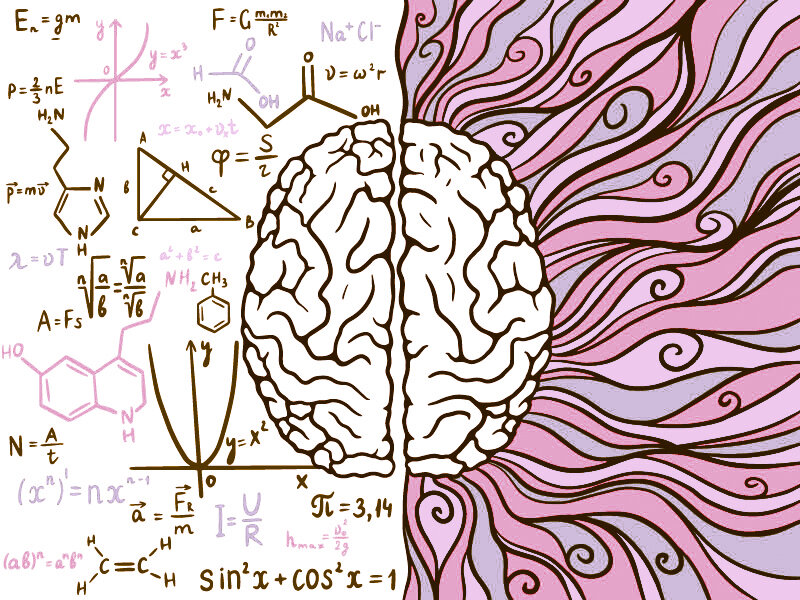Real Life and Our Dreams, Are They Connected?
Have you been questioning whether your dreams have any connection to your real life? Sure you may hesitate to believe that a dream about purple aliens or talking animals could represent anything in your reality. However, many neuroscientists and dream analysts have found quite the opposite.
Today, we are breaking down the difference between thoughts while awake and while dreaming. And we'll identify a very significant connection between our dreams and real life.
What Is Dreaming?
There are many definitions and theories on what dreaming really is. Neuroscientist Penelope A. Lewis outlines her definition of dreaming in her book The Secret World of Sleep: The Surprising Science of the Mind At Rest.
Although there is no official, universally accepted definition of dreaming, Lewis says that one fairly safe catch-call definition for a dream is all perceptions, thoughts, or emotions experienced during sleep.
Like many other neuroscientists, she recognizes that the physical basis behind dreaming is complex, but says it can be broken down into these four points:
Everything we imagine, see, think, or dream about is a neural response somewhere in the brain.
Our dreams are housed in primary sensory areas (visual, auditory, etc.) found in the brain’s neocortex.
Responses can fire off randomly in the brain. Our minds are capable of creating fragmented images, sounds, perceptions, and illusions.
Perceptions can be strung together sequentially or at random, causing us to feel like we are actually seeing, hearing and experiencing things—otherwise known as “dreaming.”
Why Do We Dream?
You may still be wondering, does dreaming have a connection to real life? Understanding this question requires a little more background on the various types of mental functions in the brain.
Let us introduce you to epiphenomenon. It's a mental state regarded as a byproduct of brain activity. This is a type of thinking that occurs when we are awake. It's when we're focusing our attention on activities like solving a problem or writing a sentence. And this type of thinking is actually different from our thoughts and feelings.
Keeping this in mind, the Contemporary Theory of Dreaming argues that accepting thoughts as a different brain function to epiphenomenon requires us to also accept the existence and function of dreaming. As dreaming activities are less focused, looser, more global, and more imagistic. This dream theory also states that dreaming is at the far end of this continuum. In a dream state, we make connections most loosely.
So Is There A Connection Between Dreams and Real Life?
The short answer: yes.
Because dreams result from the activity in our brains, which house our perceptions of ourselves and the world around us. It would be impossible to say that dreams have nothing to do with our waking lives. In a John Hopkins University study, pregnant women who dreamt about the sex of their baby were correct 100% of the time! Pretty strong numbers, if you ask us.
Author Tom Robbins once stated that “dreams don’t come true; they are true.” This quote makes a lot of sense. Especially when you think about statements like “making your dreams come true.” This really means “making your life goals or ambitions come true.” Our dreams help us discern how we really feel. It can point us toward growth, forgiveness, rest, or acceptance of ourselves or a situation in life.
Dreams that deal with people in your life can show a connection to your subconscious feelings about that person, yourself, or your relationship. Our unconscious minds can use dreams to reveal what we are “in the dark about" in our waking lives. It can be mixed feelings that cause built-up stress around desires to change career paths, a need to move somewhere, or wanting to find someone new.
Whatever the topic, dreams are certainly powerful tools that can—and should—be used to better understand ourselves, our emotions, and our perceptions of reality.
Keeping Track of Dreams
This connection does not mean, however, that dream meanings are always totally clear to the dreamer. Many people use dream interpreters to help them understand the connection between their dreams and real life. When team mindmilk interprets our dream submissions, we start with identifying significant dream symbols and themes, in order to interpret the meaning behind the dream.
Another great way to find the connection between your dreams and real life is to create and maintain a dream journal. (Tip: keep it beside your bed, so you can add to it right when you wake up!) Taking intentional time to look back on previous dreams in an attempt to decode and understand them can have quite a positive impact on our emotional, physical and mental health.
keep dreaming + sharing dreams with us,
mindmilk
